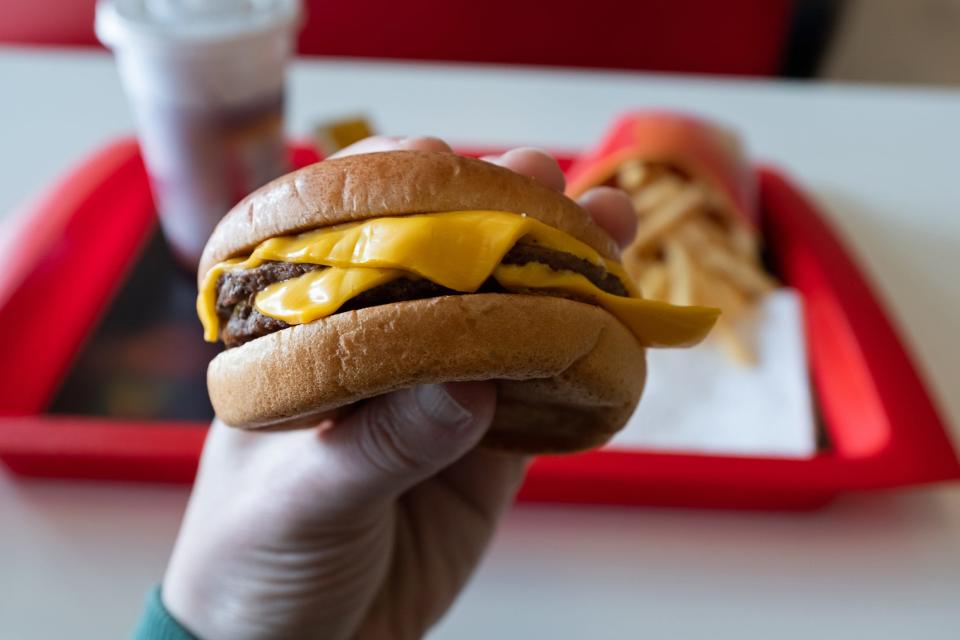-
Ultra-processed foods dominate the Western diet and are linked to serious health issues.
-
Food companies use sensory scientists to make UPFs irresistible.
-
Professor Barry Smith, a senses expert, cut out UPFs and lost weight without trying.
A professor of the senses who used to help multinational food companies create ultra-processed foods lost weight without trying after he cut them out of his diet when he learned about their health risks.
Professor Barry Smith, the director of the University of London Institute of Philosophy, told Business Insider that he previously worked with Kellogg’s, Coca-Cola, and Ferrero and that UPFs accounted for about 30% to 40% of his diet.
UPFs, which are made using ingredients and processes you wouldn’t find in a regular kitchen, are a key feature of the Western diet. A 2024 research paper by Northeastern University’s Network Science Institute, which hasn’t been peer-reviewed, found they made up 73% of the US food supply.
Smith said these hyper-palatable foods contain the perfect fat-to-carbohydrate ratio, which makes it near-impossible for us to stop eating them.
“These are foods that are so desired by our system that they actually slow down our satiety mechanisms,” he said. Research published in Nature Food last year found that the more hyper-palatable foods there were in a meal, the more calories participants tended to eat overall.
Smith started to cut down on UPFs around 2020 after Dr. Chris van Tulleken, the author of the bestselling book “Ultra Processed People,” which shines a light on the harms of industrial food processing, asked him to go on his podcast.
“They wanted to find out from me what are all the sensory tricks and the hacks of our senses that go on in food manufacture and food formatting that get us to consume, desire, crave these foods,” Smith said.
It made him more conscious of the health concerns — a study published in February in The BMJ linked UPFs to a higher risk of 32 health problems, including type 2 diabetes, depression, and cardiovascular disease — and reflect on his work.
“I came to see how in a slightly unknowing way, I was maybe aiding and abetting these moves by the food industry and began to think, no, I simply can’t in good conscience do that,” he said.
Food companies hire sensory scientists and chemists to help make their UPFs irresistible, but they tend not to eat the products they help create, Smith said.
“They know what the design, the formatting, the industrial processing is about. So they don’t necessarily want to eat them themselves,” he said.
Smith no longer works with UPF companies (although he said he never advised on how to make food that people can’t stop eating).
He shared three things that helped him change his diet.
Take a break from UPFs first (and you may not want to go back)
The more Smith learned about the health risks of UPFs, the less he wanted to eat them, so he decided to cut them out entirely.
He realized he didn’t like that they had a physiological effect on him, and over time, he started to actively dislike them.
“They seem too intense, over-flavored, too shouty in some sense,” he said.
And he noticed that he felt better for it. “I was consciously cutting out ultra-processed food because of the bad things it might do for my health. And then found the effects were so desirable,” he said.
He felt more energetic, full for longer, and able to stop eating when he felt full. He also lost weight without trying.
He believes this is because he was hooked on UPFs before, rather than actually enjoying them, and taking a break from them allowed him to see them for what they were.
“Cutting out that craving, you find yourself resorting to quite natural intake regulation where you don’t overeat,” Smith said. “It’s not that these are foods that we necessarily like more than anything else, but they’re foods that we want and can’t seem to stop wanting.”
While this worked for Smith, going cold turkey isn’t for everyone. As the registered dietitian Linia Patel previously told BI about cutting back on UPFs, creating any new habit involves changing our behavior, so it’s helpful to unpack what works for you.

Check food labels
Smith said checking the nutrition labels on food items had helped him choose minimally processed products.
He said he’d found that even some items you’d expect to be “perfectly OK,” such as a tin of grocery-store kidney beans, could contain gelling agents or stabilizers. He gets around this by opting for organic versions.
Unfortunately, this highlights how eating a healthy diet can be dependent on a person’s food environment and socioeconomic status.
Find genuinely tasty alternatives
As a professor of the senses, Smith is interested in the multisensory experience of eating. “How things look, how they smell, the feel on the fingers, even the sound of the food when you’re snapping something or when you’re shaking something up. All of those things are part of the experience of tasting and eating,” he said.
It’s crucial to take this into account when shifting away from UPFs that have been manufactured to be delicious, he said.
“You’re not going to persuade people to move away from ultra-processed food by telling them it’s bad for them. It’s got to be flavor first,” he said.
Although nutritious, vegetables can be quite boring, he said, but there are many ways to make them interesting, such as roasting, pickling, and fermenting.
“You need to make them really tasty so that people realize, ‘I can actually make something reasonably cheap and reasonably well that I’m actually going to enjoy eating,'” he said.
Read the original article on Business Insider
Source Agencies


